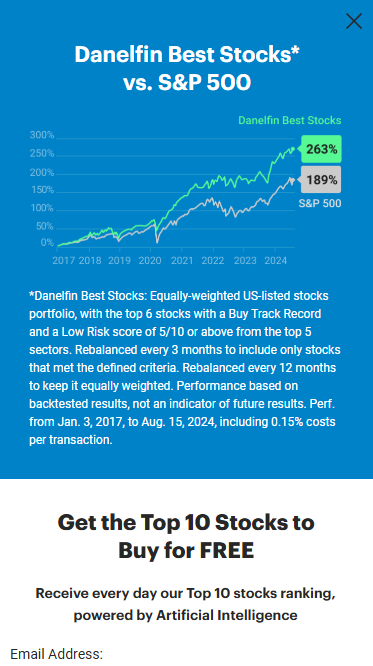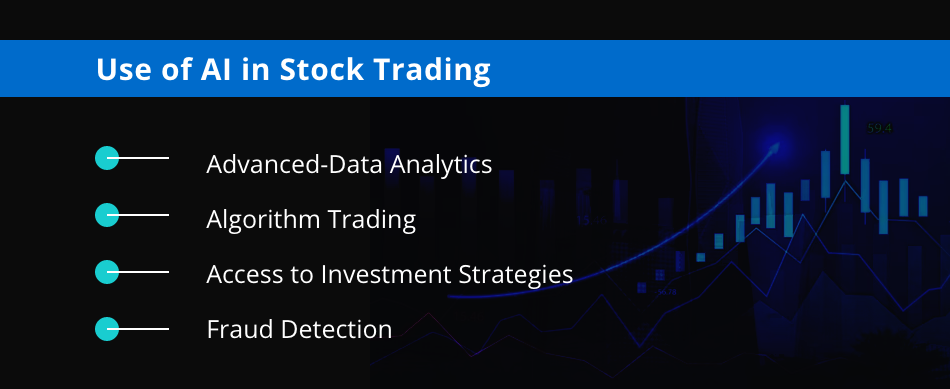When evaluating AI trading platforms that can predict or analyze stocks, market coverage is a key aspect to take into consideration. It determines what assets and markets are readily available. Market coverage is essential because it allows you to diversify, discover the world's markets, and adjust to different strategies for trading. Here are the top ten ways to determine the market coverage of these platforms.
1. Evaluate Supported Asset Classes
Stocks - Ensure that the platform is able to provide coverage of the major markets for stocks (e.g. NYSE NASDAQ LSE HKEX) as well as includes mid-caps, small-caps and large-caps.
ETFs: Make sure that the ETF platform you are using offers an array of ETFs that offer diversified exposure across different categories, themes and even regions.
Options and futures. Make sure the platform includes derivatives like futures, options and other instruments leveraged.
Forex and commodities: Check whether the platform can support the forex pair, precious metals, agricultural products, energy commodities, and other commodities.
Cryptocurrencies - Make sure to check whether your platform is compatible with major copyright like Bitcoin, Ethereum and altcoins.
2. Check coverage in the geographic area.
Global markets - Ensure that the platform can to serve all major markets around the world which includes North America (including Canada), Europe, Asia-Pacific markets, and emerging ones.
Regional focus: Find out if the platform specializes in specific regions or markets that align with your interests in trading.
Local exchanges - Examine for local or regional exchanges in relation to your location and strategy.
3. Delayed Data Vs. delayed data
Real-time Market Data: The system must offer real-time trading information to allow for rapid decision-making.
Delayed data: Find out whether you are able to get delayed data for no cost, or at a lower cost. This could be sufficient for investors who are looking to invest long-term.
Data latency: Verify whether the platform is able to reduce latency in real-time feeds of data, particularly in high-frequency trading.
4. Assess Historical Data Availability
Depth of Historical Data Check that the platform provides extensive historical data that can be used for backtesting, analysis and testing (e.g. 10or more years).
Find out the detail in the historical data.
Corporate actions - Examine historical data to ensure that it reflects stock splits or dividends, as well as other corporate activities.
5. Examine the market depth as well as order book information
Platform should provide Level 2 data (order-book depth) to help improve price search and execution.
Bid-ask Spreads: Ensure that the platform displays real-time spreads between bid and request for the most precise pricing.
Volume data - Check if the platform provides specific volume data for studying market activities and liquidity.
6. Examine Coverage for Indices and Sectors
Major indices: Make sure that the platform includes the most important benchmarking indices that are used for index-based strategies, as well as other reasons (e.g. S&P 500, NASDAQ 100, FTSE 100).
Data specific to a sector to provide targeted analysis, make sure the platform has data specific to a specific industry (e.g. technology, healthcare, or energy).
Custom indices. Check that the platform is able to track or create customized indices that meet your requirements.
7. Integrate Sentiment and News Data
News feeds - Ensure your platform is equipped with live market-moving news feeds (e.g. Bloomberg, Reuters).
Use the sentiment analysis tool on the platform based on information from news, social media or other sources.
Strategies that are based on events (e.g. earnings announcements or economic reports) Make sure that your platform allows trading strategies based on events.
8. Look for Multimarket Trading capabilities.
Cross-market trade: Check that the platform supports trading across markets and asset categories using a common interface.
Confirm that the platform supports multicurrency accounts as well as currency conversions to facilitate international trading.
Make sure you have support for time zones.
9. Examine the coverage of alternative data Sources
Alternate data sources: To gain new insights, make sure that the platform uses other data sources.
ESG data. Check if the platform is stocked with socio-economic, environmental, and governance information for socially accountable investing.
Macroeconomic data: Ensure that the platform has macroeconomic indicators that can be used to analyze fundamental issues (e.g. GDP and inflation rates, as well as interest rates).
Review Customer Feedback and Market Reputation
User feedback: Use user reviews to determine the platform's reliability and market coverage.
Industry reputation: Verify whether the platform is recognized by industry experts in terms of market coverage.
Case studies: Search for cases studies, testimonials and other data that demonstrates the platform's effectiveness on specific market segments or asset types.
Bonus Tips
Trial period: Take advantage of the demo or trial version for free to test the platform's market coverage and data quality.
API access: Check if your platform's API allows access to market data in a programmatic manner to run custom analyses.
Customer support: Make sure the platform can assist with any market-related queries or data-related issues.
These suggestions will allow you assess the market coverage offered by AI trading platforms that forecast or analyze stock prices. So you'll have the ability to select the platform that offers the information and markets you require for successful trading. A comprehensive market coverage allows you to diversify your portfolio and discover the possibilities of your portfolio. It also allows you to adapt to market changes. Check out the most popular AI stock picker examples for website examples including best AI stock, incite, ai investment app, ai for stock trading, ai for stock trading, best ai for trading, AI stock picker, incite, chart ai trading assistant, ai for investing and more.

Top 10 Tips To Evaluate The Updating And Maintenance Of AI stock Analysing Trading Platforms
Examining the maintenance and updates of AI-powered trading and stock prediction platforms is critical to ensure they remain effective, secure and in tune with the changing market conditions. Here are 10 tips for evaluating the maintenance and update procedures:
1. Frequency of Updates
Tip: Find out the frequency of updates to your platform (e.g. monthly, quarterly, weekly).
Regular updates demonstrate active improvement of the product and an ability to react to market changes.
2. Transparency is a key element in the Release Notes
Tips: Read the platform's release notes to understand what changes or improvements are in the works.
Release notes that are transparent demonstrate the platform's commitment to continuous improvements.
3. AI Model Retraining Schedule
You can ask the AI model how often it's retrained.
Reasons: Models have to change to stay accurate and relevant as markets shift.
4. Bug Fixes & Issue Resolution
Tips: Make sure you check how fast the platform fixes bugs or other technical issues.
The reason is that prompt corrections to bugs will ensure the platform remains operational and secure.
5. Security Updates
Tip : Verify whether the platform is updated regularly with its security protocol to protect the user's data.
Security is a must for the financial industry to avoid theft and fraud.
6. Incorporating New Features
TIP: Check to see if the platform has introduced new features (e.g. improved analytics, new sources of information) on the basis of user feedback and/or market trends.
Why are feature updates important? They are a sign of creativity and responsiveness to the needs of users.
7. Backward Compatibility
TIP: Make sure that the upgrade doesn't cause major interruptions to functionality that is already in place or require a significant change in configuration.
Why? The backward compatibility of the software makes sure that the software can be used with ease.
8. Communication between Maintenance and User Personnel
Tip: Check how users are informed of planned maintenance or time of downtime.
What is the reason? Clear communication prevents disruptions and builds confidence.
9. Performance Monitoring & Optimization
Check to see if your system is checking performance metrics, such as latency and accuracy and is constantly optimizing its systems.
Why? Ongoing improvement will ensure that the platform remains effective.
10. Compliance with Regulatory Changes
TIP: Determine if the platform is updating its features and policies to ensure that they are in line with the new financial regulations or data privacy laws.
The reason: To minimize legal risks and keep user confidence, compliance with the regulatory framework is essential.
Bonus Tip User Feedback Integration
Verify that maintenance and updates are based on user feedback. This shows an approach that is based on user feedback and a desire to improve.
By evaluating all of these factors, it is possible to make sure you're sure the AI stock trading platform you choose to use has been well-maintained. It must be current and able to adapt to changes in market dynamics. View the best best ai penny stocks hints for site info including chart ai trading, ai options trading, ai tools for trading, free ai tool for stock market india, free AI stock picker, AI stock investing, best ai penny stocks, ai share trading, AI stock trader, best AI stocks and more.
